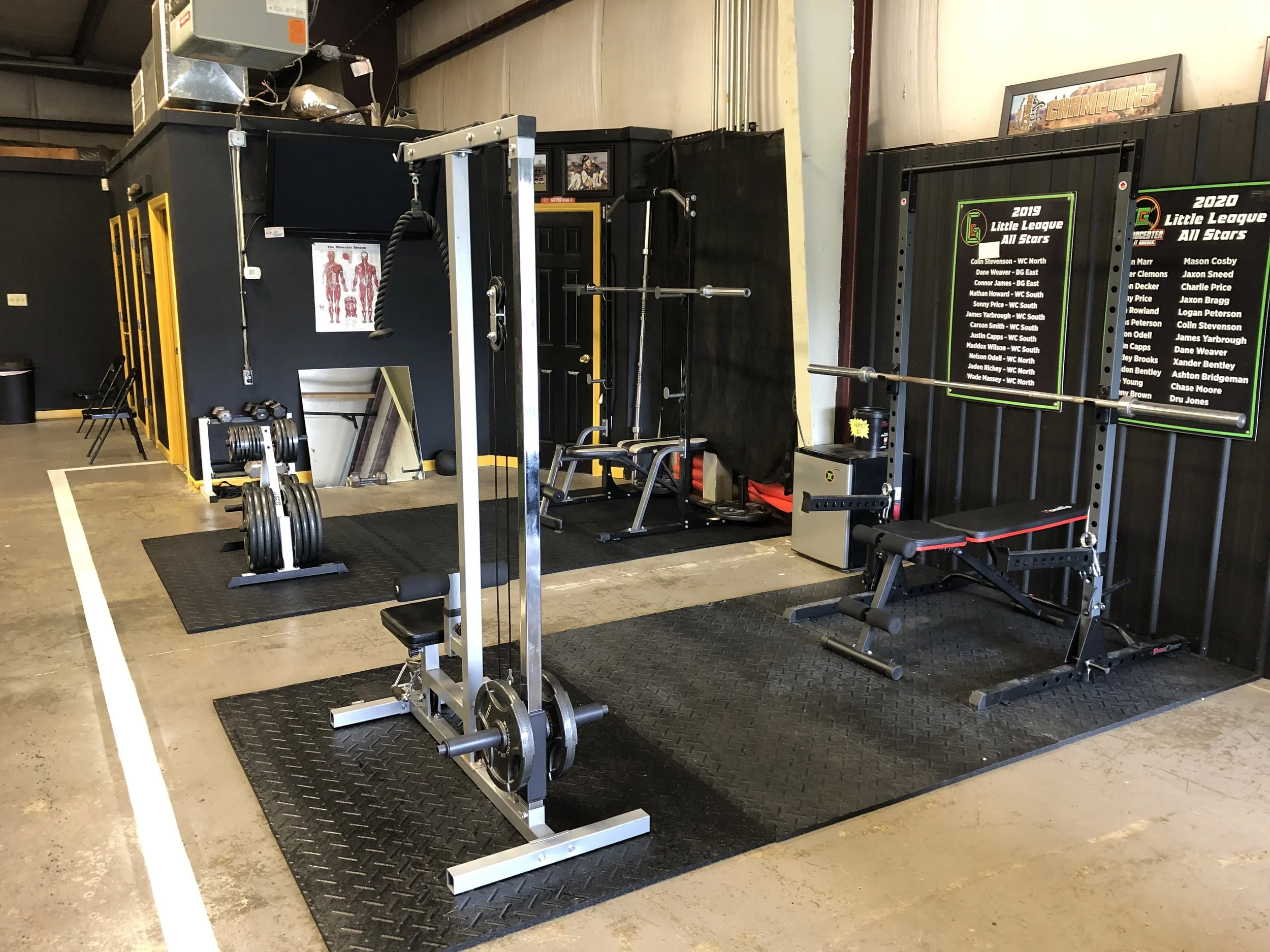PRICING
Monthly Gym Membership with Individualized Workout Plan - $20/Month
Personal Training - $30 Per Session
TRAINING GOALS
Ages 8 and Under
30 Minute Sessions
Our goal is to create a positive and fun environment that encourages children to be active, develop physical skills, and cultivate a love for staying active throughout their lives.
1. **Physical Literacy:** Encourage the development of fundamental movement skills like running, jumping, hopping, and skipping. These skills are the building blocks for future athletic endeavors.
2. **Cardiovascular Fitness:** Improve cardiovascular health and stamina through fun activities like tag games, relay races, or playful sprints.
3. **Strength and Coordination:** Enhance muscular strength and coordination through bodyweight exercises and games that involve movements like jumping jacks, frog jumps, or bear crawls.
4. **Balance and Agility:** Promote balance and agility with activities such as cone drills, ladder drills, or hopping on one foot.
5. **Motor Skill Development:** Focus on improving motor skills such as hand-eye coordination, reaction time, and spatial awareness through games like catching, throwing, and hopping over obstacles.
6. **Safety and Fun:** Prioritize safety by ensuring that exercises are age-appropriate and that children are supervised. Above all, make sure the activities are enjoyable to keep kids engaged and enthusiastic about exercise.
7. **Healthy Habits:** Instill the importance of physical activity as a lifelong habit, emphasizing that exercise can be fun and enjoyable.
Ages 9-13
30 Minute Sessions
Our primary goal at this age is to lay a solid foundation of proper weightlifting techniques, safety awareness, and a positive attitude towards strength training. This foundation will serve as a valuable asset if the child decides to pursue more advanced weightlifting or athletic endeavors in the future.
1. **Safety First:** Ensure that children understand the importance of safety in weightlifting, including proper form, the use of appropriate equipment, and the need for adult supervision.
2. **Technique Mastery:** Focus on teaching proper lifting techniques for basic exercises like squats, deadlifts, bench presses, and rows. The goal is to establish a solid foundation of form before adding significant weight.
3. **Body Awareness:** Help children develop awareness of their bodies and how to control movements during lifts. Emphasize balance and control.
4. **Strength Foundation:** Build a foundation of strength through bodyweight exercises, resistance bands, and light weights. Prioritize proper form over lifting heavy loads.
5. **Full-Body Engagement:** Encourage the use of full-body movements in exercises to promote balanced muscle development.
6. **Coordination:** Enhance coordination and neuromuscular control through weightlifting movements and drills.
7. **Core Strength:** Emphasize core stability and strength, as this is crucial for proper lifting technique and injury prevention.
8. **Focus on Fun:** Make the workouts engaging and enjoyable to maintain the child's interest in strength training. Incorporate games and challenges to keep it exciting.
9. **Educational Component:** Teach children about the benefits of strength training, including improved physical health, self-confidence, and injury prevention in other activities.
10. **Progression:** Gradually increase the resistance or intensity of exercises as children become more proficient, ensuring that the progression is age-appropriate.
11. **Rest and Recovery:** Educate children on the importance of rest and recovery between workouts to prevent overuse injuries.
12. **Lifelong Fitness:** Instill the concept of strength training as a lifelong fitness activity that can be a part of their overall health and well-being.
Ages 14+
30 Minute Sessions
Our goals become more focused on building muscle, strength, and improving overall physical fitness.
1. **Muscle Growth (Hypertrophy):** Increase muscle size through targeted resistance training to improve aesthetics and functional strength.
2. **Strength Development:** Enhance overall strength, which includes improving one's ability to lift heavier weights and perform compound exercises effectively.
3. **Body Composition:** Achieve a desirable body composition by reducing body fat percentage and increasing lean muscle mass.
4. **Functional Strength:** Develop strength that can be applied to everyday activities and athletic pursuits.
5. **Progressive Overload:** Implement a structured plan to progressively increase resistance, either through heavier weights or more challenging exercises, to stimulate muscle growth and strength gains.
6. **Technique Mastery:** Continue to prioritize proper exercise form and technique to minimize the risk of injury and maximize muscle activation.
7. **Periodization:** Incorporate periodization strategies into the workout plan, including phases of higher intensity, volume, and varied exercises to prevent plateaus.
8. **Nutrition:** Pay attention to proper nutrition to support muscle growth and recovery, including an adequate intake of protein, carbohydrates, and healthy fats.
9. **Rest and Recovery:** Ensure adequate rest between workouts and focus on recovery strategies such as sleep, stretching, and foam rolling.
10. **Consistency:** Maintain a consistent workout routine, attending sessions regularly, and tracking progress over time.
11. **Injury Prevention:** Incorporate exercises that strengthen stabilizing muscles and joint health to reduce the risk of injuries.
12. **Mental Wellness:** Recognize the mental benefits of exercise, such as stress reduction and improved mood, and incorporate fitness into a holistic approach to well-being.
13. **Long-Term Commitment:** Encourage a long-term commitment to strength and fitness as a sustainable lifestyle rather than a short-term endeavor.

